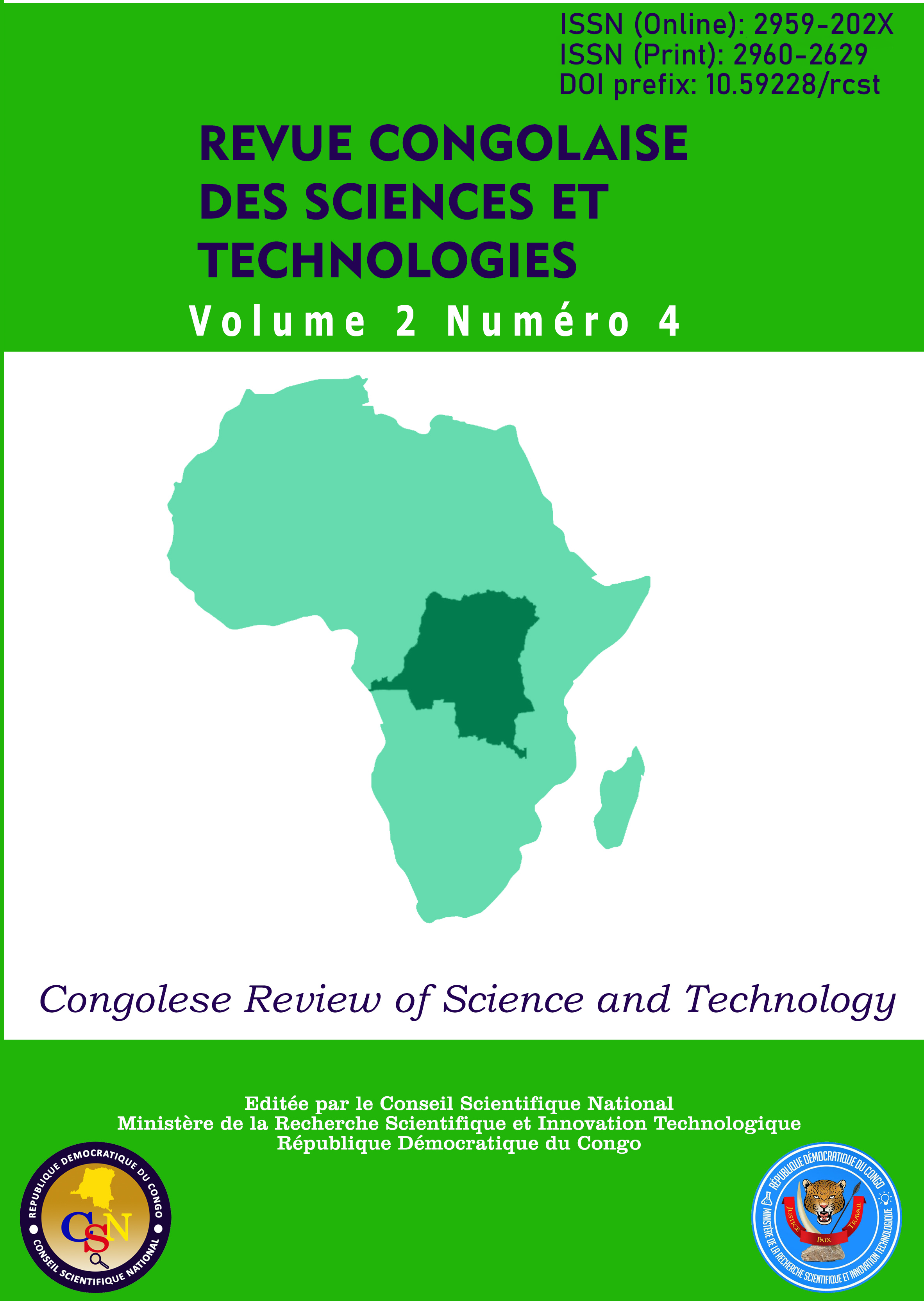Survey on the socio-environmental impact of wood use and remediation strategies in households of Kisangani city (Tshopo province) in the Democratic Republic of the Congo
Main Article Content
Abstract
This study aimed to assess the socio-environmental impact of wood use in households in Kisangani, Tshopo Province,
Democratic Republic of the Congo. Additionally, it sought to identify and analyze remediation strategies that could mitigate
these impacts. The study aimed to understand current household practices regarding wood use, with the goal of proposing
recommendations for a more sustainable utilization of forest resources. The findings indicate that wood use has negative
externalities in Kisangani households, contributing to health issues such as pneumonia, irritation of ocular surfaces (allergic
conjunctivitis), bronchopneumonia, as well as deforestation, loss of non-timber forest products, climate change, etc. In
conclusion, this study emphasizes the necessity of adopting sustainable remediation strategies. The results underscore the
urgency of raising awareness within the community about responsible forest management practices and promoting the use of
ecological alternatives. Collaborative efforts involving local authorities, NGOs, and the local population are essential to
preserve the environment while meeting household energy needs.
Article Details

This work is licensed under a Creative Commons Attribution-NonCommercial-ShareAlike 4.0 International License.
References
Angoboy, I.B. (2021). Phenology and growth traits
governing forest dynamics of tropical tree
species communities : experimental data based
on the Luki Man and Biosphere Reserve, DR
Congo. Ghent University: Faculty of
Bioscience Engineering, Ghent, Belgium.
Kadima, K. (2011). La dynamique du système urbain
de Kisangani et son impact sur l’exploitation
des écosystèmes forestiers des collectivités de
son environnement proche [Thèse de DoctoratUPN].
Kambale, J.K, Feza, F.M., Tsongo, J.M., Asimonyio,
J.A., Mapeta, S., Nshimba, H., Gbolo, B.Z.,
Mpiana, P.T., Ngbolua, K.N. (2016). La filière
bois-énergie et dégradation des écosystèmes
forestiers en milieu périurbain: Enjeux et
incidence sur les riverains de l’ile Mbiye à
Kisangani (République Démocratique du
Congo). International Journal of Innovation
and Scientific Research 21(1), 51-60.
Mohammed, E. (2012). L’économie de la forêt et des
produits forestiers au Maroc: Bilan et
perspective. Presses Académiques
Francophones. ISBN: ISBN-13: 978-3-8381-
-8
Ngbolua, K.N., Falanga, M.C., Djolu, D.R.,
Masengo, A.C., Gamo, N.A., Bongo, N.G.,
Gbolo, Z.B., Mudogo, V., Mpiana, P.T.
(2019). Socio-economic and Environmental
Impacts of Clay Brick Manufacturing in
Gbado-Lite City (Nord Ubangi Province, DR
Congo). Journal of Environment Protection
and Sustainable Development 5(3), 126-131.
OMS (2014). Consommation domestique de
combustibles. Consulté le 10 mai 2021,
OMS (2018). Nouvelles normes pour réduire les
dommages pour la santé de la pollution de l’air
à l’intérieur des habitations. Consulté le 10
mai 2021, https://www.who.int
OMS. (2007). Fuel for life. Consulté le 10 mai 2021,
Schure, J. (2011). Le bois énergie en RDC: Analyse
de la filière des villes de Kinshasa et
Kisangani, Projet Makala/Cifor, Kinshasa.
Shuku, O.N. (2011). Impact de l'utilisation de
l'énergie-bois dans la ville province de
Kinshasa en République démocratique du
Congo (RDC). Mémoire: Montréal (Québec,
Canada), Université du Québec à Montréal,
Maîtrise en géographie.

